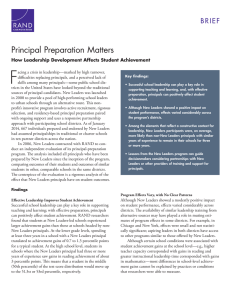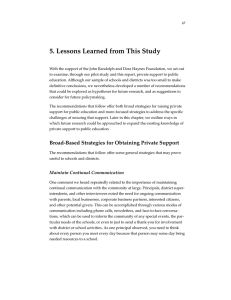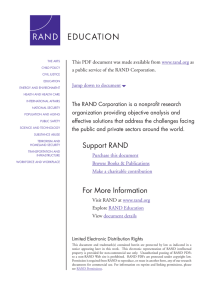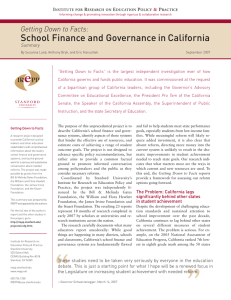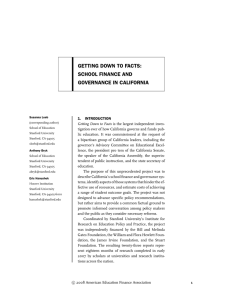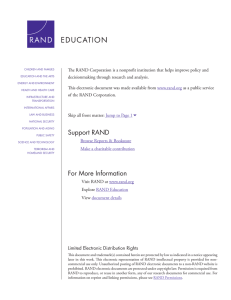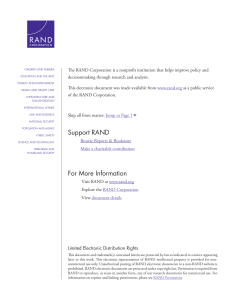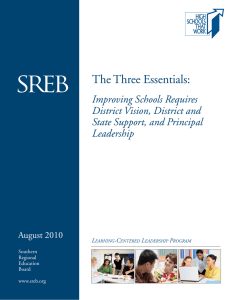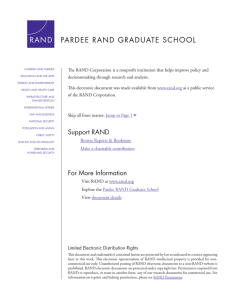Leveraging Partnerships to Enhance the Impact of Principal-Preparation Programs EDUCATION
advertisement
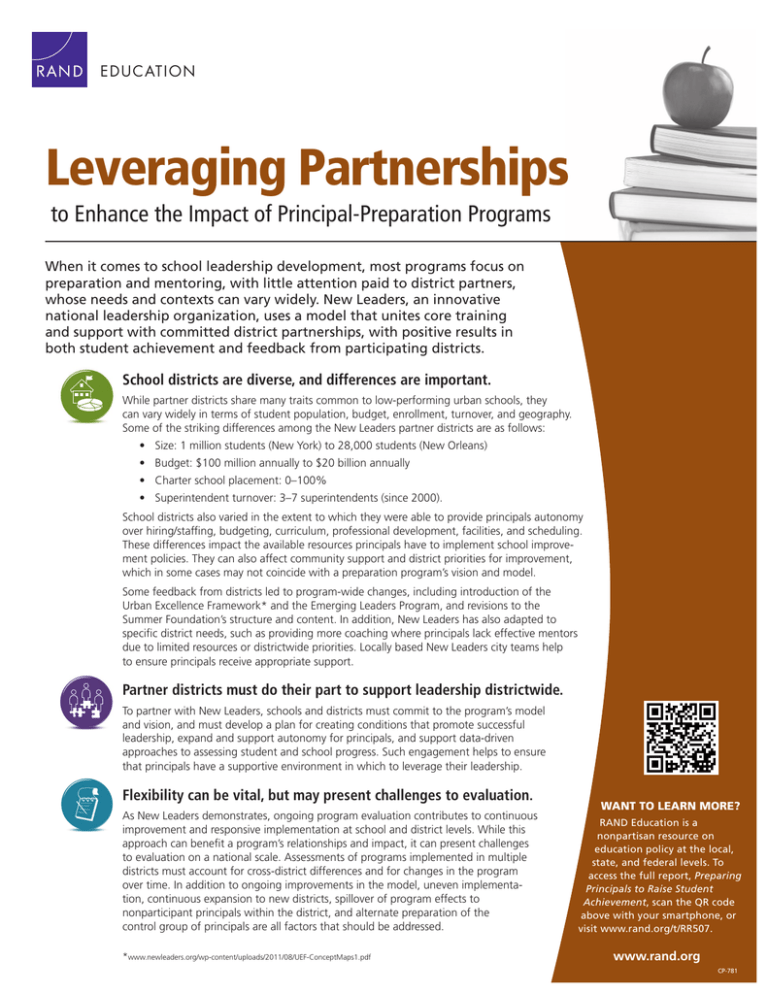
E D U C AT I O N Leveraging Partnerships to Enhance the Impact of Principal-Preparation Programs When it comes to school leadership development, most programs focus on preparation and mentoring, with little attention paid to district partners, whose needs and contexts can vary widely. New Leaders, an innovative national leadership organization, uses a model that unites core training and support with committed district partnerships, with positive results in both student achievement and feedback from participating districts. School districts are diverse, and differences are important. While partner districts share many traits common to low-performing urban schools, they can vary widely in terms of student population, budget, enrollment, turnover, and geography. Some of the striking differences among the New Leaders partner districts are as follows: • Size: 1 million students (New York) to 28,000 students (New Orleans) • Budget: $100 million annually to $20 billion annually • Charter school placement: 0–100% • Superintendent turnover: 3–7 superintendents (since 2000). School districts also varied in the extent to which they were able to provide principals autonomy over hiring/staffing, budgeting, curriculum, professional development, facilities, and scheduling. These differences impact the available resources principals have to implement school improvement policies. They can also affect community support and district priorities for improvement, which in some cases may not coincide with a preparation program’s vision and model. Some feedback from districts led to program-wide changes, including introduction of the Urban Excellence Framework* and the Emerging Leaders Program, and revisions to the Summer Foundation’s structure and content. In addition, New Leaders has also adapted to specific district needs, such as providing more coaching where principals lack effective mentors due to limited resources or districtwide priorities. Locally based New Leaders city teams help to ensure principals receive appropriate support. Partner districts must do their part to support leadership districtwide. To partner with New Leaders, schools and districts must commit to the program’s model and vision, and must develop a plan for creating conditions that promote successful leadership, expand and support autonomy for principals, and support data-driven approaches to assessing student and school progress. Such engagement helps to ensure that principals have a supportive environment in which to leverage their leadership. Flexibility can be vital, but may present challenges to evaluation. As New Leaders demonstrates, ongoing program evaluation contributes to continuous improvement and responsive implementation at school and district levels. While this approach can benefit a program’s relationships and impact, it can present challenges to evaluation on a national scale. Assessments of programs implemented in multiple districts must account for cross-district differences and for changes in the program over time. In addition to ongoing improvements in the model, uneven implementation, continuous expansion to new districts, spillover of program effects to nonparticipant principals within the district, and alternate preparation of the control group of principals are all factors that should be addressed. *www.newleaders.org/wp-content/uploads/2011/08/UEF-ConceptMaps1.pdf WANT TO LEARN MORE? RAND Education is a nonpartisan resource on education policy at the local, state, and federal levels. To access the full report, Preparing Principals to Raise Student Achievement, scan the QR code above with your smartphone, or visit www.rand.org/t/RR507. www.rand.org CP-781




